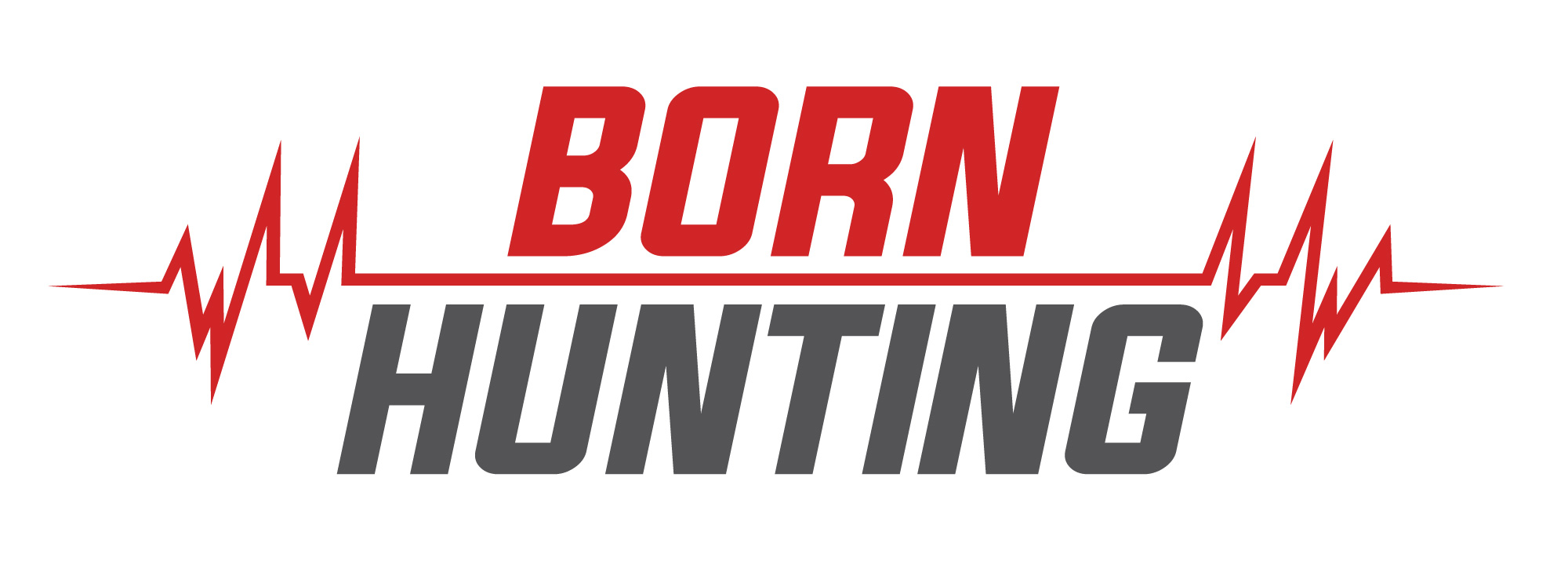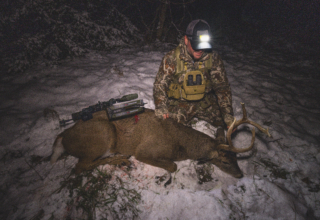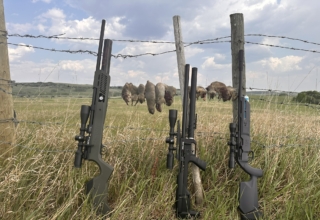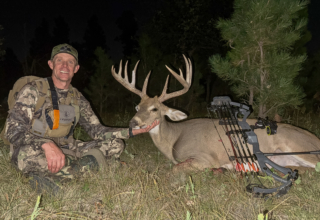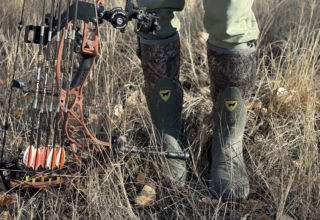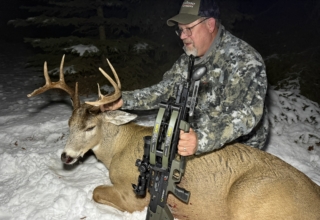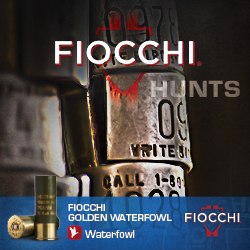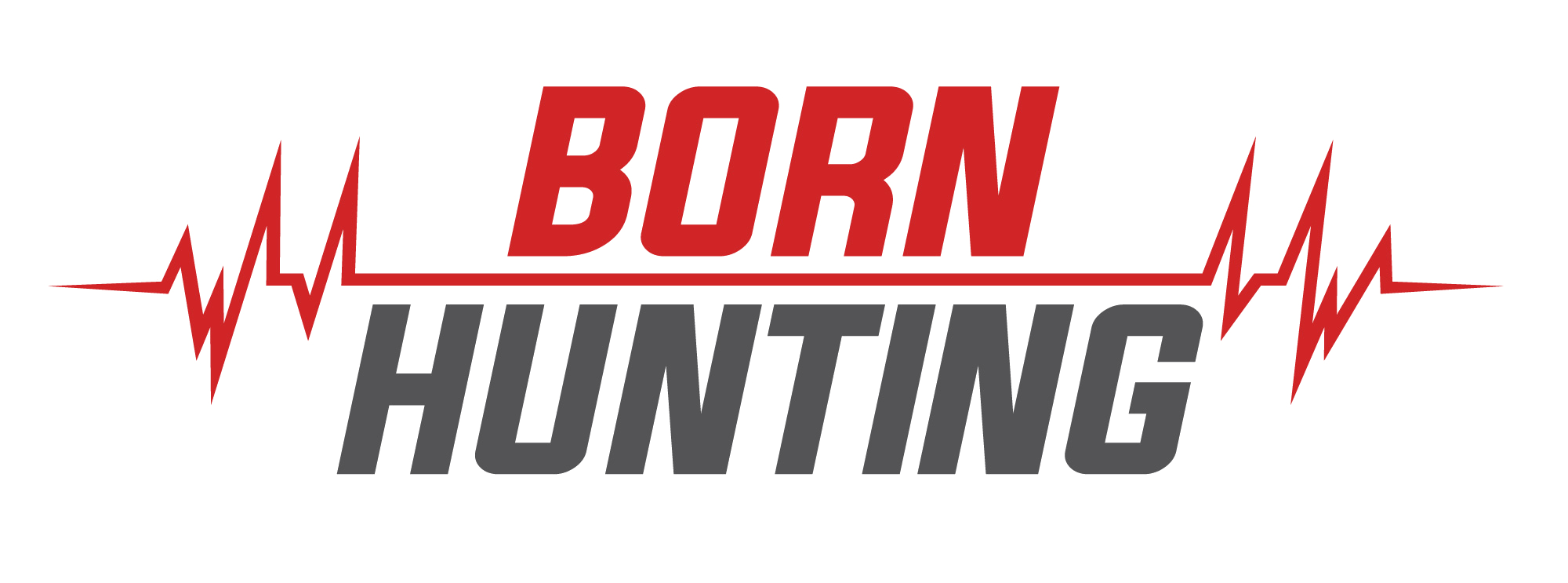Bowtech bills its new Ascend compound bow as an under $1K flagship bow. Is it?
by Jace Bauserman
Bowtech has always been about providing bowhunters and target archers with technology-rich bows that meet their needs and wants. Bowtech has never wavered in the technology department, and likely, never will. The bottom line: the compound bow maker crafts excellent vertical bows.
Another feather in Bowtech’s cap is its ability to stay attuned to the heartbeat of the archery industry. Concerning compound bows, that pulse has been a bit weak as of late.
Why?
Cost, mostly. The least expensive flagship bow of 2025 that I put arrows through is Mathews’ Lift X. At $1359, the Lift X hits a decent price point, especially for a flagship bow. Still, there was a time, not too long ago, that a flagship bow from most any bow maker could leave the dealer’s shelf for a smooth $1K. Times have changed. The average price of 2025 flagship bows is north of $1,550.
There are many bowhunters out there who don’t want to go the budget or beginner bow route but don’t want to drop over $1K for a flagship. Enter Bowtech’s recently released Ascend.

A 31-inch axle-to-axle 4.2-pound compound, Bowtech bills the Ascend as an under $1K flagship. As I mentioned earlier, Bowtech does a good job of keeping a pulse on the archery industry.
The question: Is Bowtech’s all-new Ascend worthy of the flagship label?
Let’s find out.
Bowtech Ascend First Impressions
The Stealth Gray riser is short but flares at the top and bottom to complement the slim limb pockets, providing the archer with a sleek look. The cam system is easily recognizable, and I was thrilled to see Bowtech add its award-winning, highly adjustable, and easy-to-tune DeadLock Cams to the Ascend. Bowtech brands the cams as DeadLock Lite, but make no mistake, they offer Allen wrench tuning, Comfort and Performance modes, and allow for 1/2-inch draw-length adjustments between 24.5 and 30 inches.
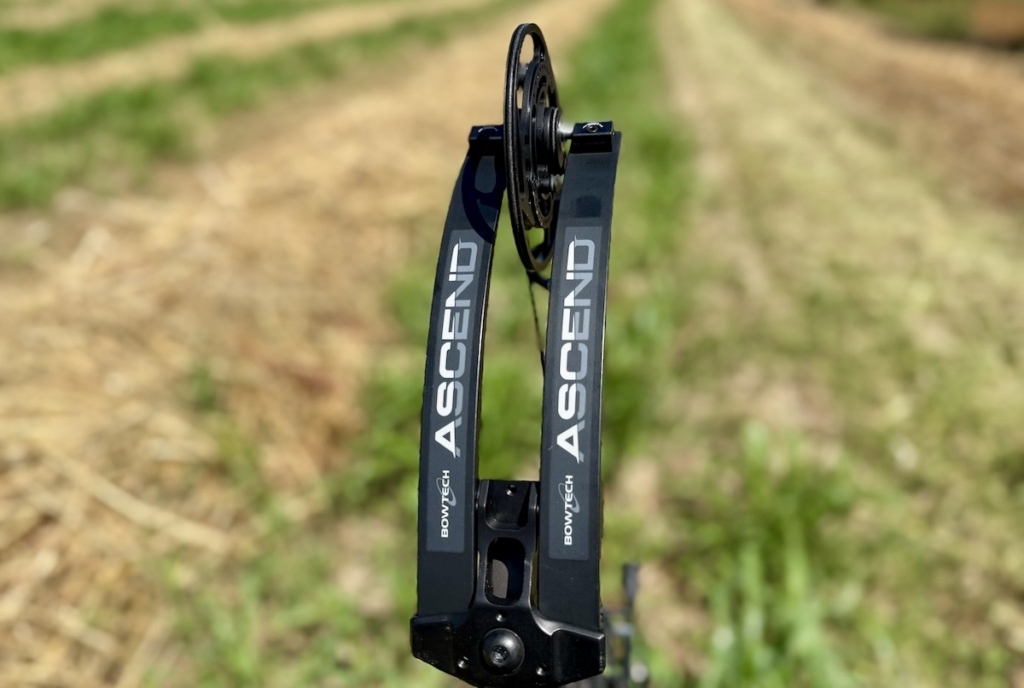
The riser also incorporates flagship accessory mounting via the Integrate Mounting System and Picatinny Sight Mount. The IMS allows for drop-away rest mounting via a clamp-style rest that sinks into the IMS slits, enabling a direct-to-riser rest attachment. This means an absolute lockdown and a lightweight, streamlined design.
Flagship Accessory Features
The Picatinny Sight Mount features three grooves cut into the forged 6061 aluminum riser, which accept PM-style sights that slide into any groove and lock down with a clamp-style system. Like the IMS system, the Pic-Mount allows for direct in line sight mounting. This system eliminates the need for a sight mounting bracket or dovetail bar. The sight mounts to the face of the riser and is in line with the riser to create a more balanced shooting experience.
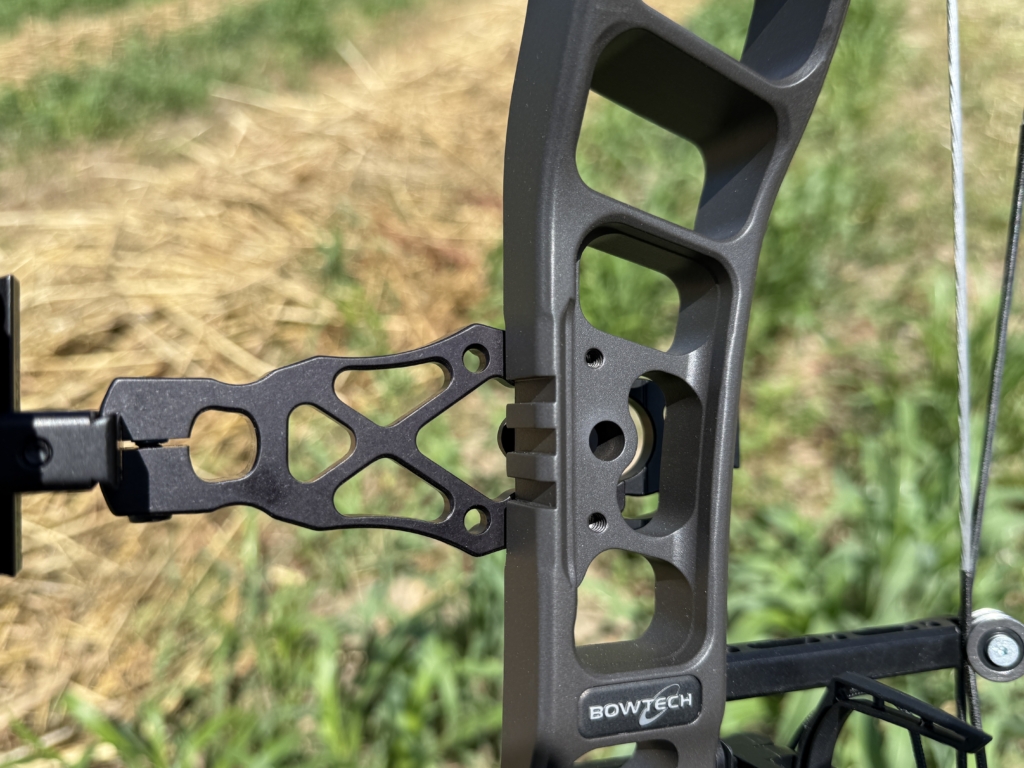
Another accessory feature usually reserved for flagship bows, Bowtech gave the Ascend two stabilizer mounting holes—one under the grip and one just below the bottom limb pocket. The dual stab holes give archers a choice of where to mount their stabilizer.
The strings and cables looked solid, and I was relieved to see the Fixed Roller Cable Guard. A flagship bow can’t have a sliding plastic cable guard. Plastic or composite guards are weak, and the cables erode the plastic, causing damage to both the guard and the cables. Bowtech’s Fixed Roller Cable Guard uses a precision roller inside a sliding rod to reduce friction.
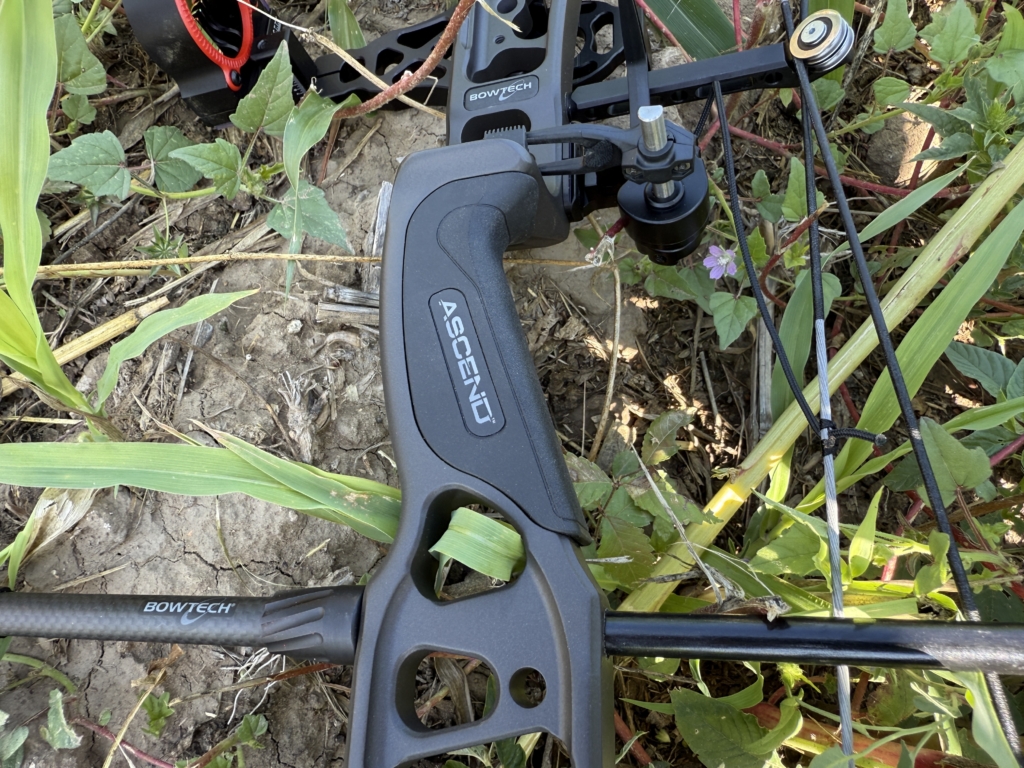
The bottom of the riser features an Orbit Dampener to reduce post-shot noise and vibration. Although I wasn’t crazy about the thicker molded grip, I hoped it would grow on me. I always prefer a direct-to-riser grip or a grip that is direct-to-riser with sideplates. The only feature that looked non-flagship during my initial inspection was the grip.
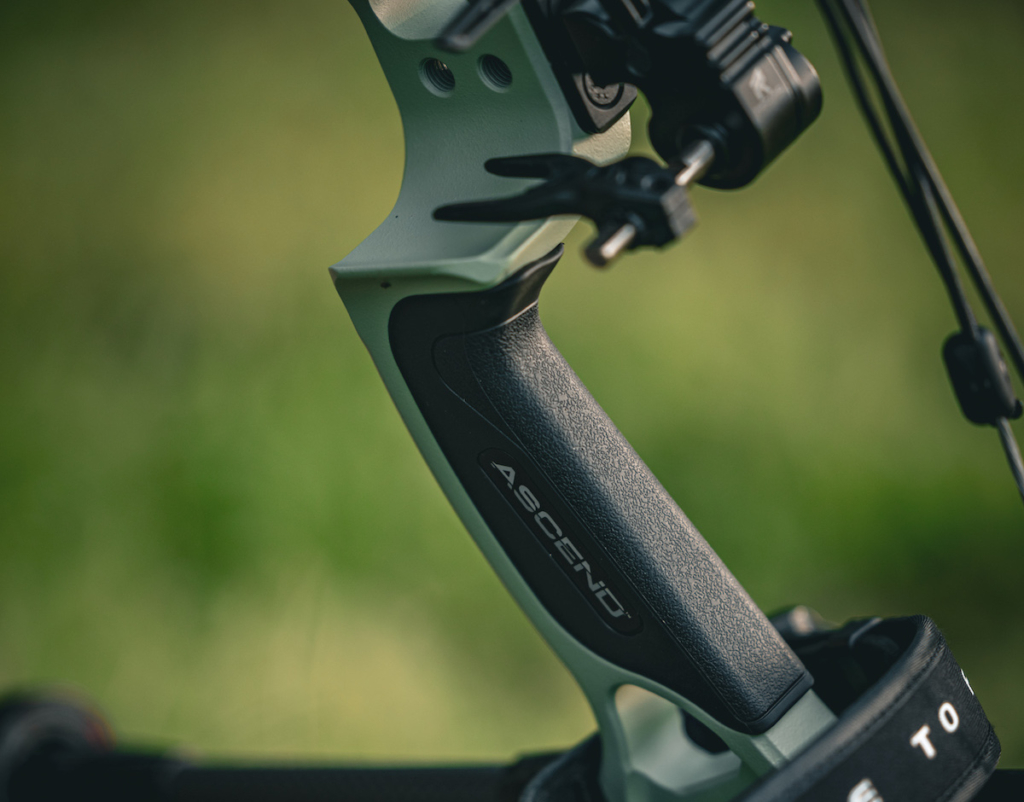
Ascend Bow Build
Bowtech sells the Ascend with a DLX Kit Option. At the time of press, Bowtech hadn’t priced the Ascend with the DLK Kit. Nevertheless, my Ascend arrived with the kit, so I planned to test the bow with the included accessories.
I will note that Bowtech needs to offer a flagship accessory package. This is a flagship bow, and the worst thing you can do to an excellent bow is outfit it with lower-end accessories.
While the Black Gold Rush 5-Pin sight and Ripcord RAK Cable Driven rest aren’t janky, they aren’t top-end. Neither allows the archer to take advantage of the IMS or Pic-Mount riser design. If you’re going to make a flagship bow and you want to offer that bow with an accessory package, that accessory package should be a flagship package.
Bowtech included a TightSpot 5-Arrow quiver and a Bowtech CenterMass 6-inch stabilizer with the package, and I consider both of these items to be excellent.
Even though I couldn’t take advantage of the IMS and Pic-Mount systems, the bow set up like a breeze. I served the rest cable into the Ascend’s bottom cable, timed the cams, and moved quickly through the building process. The bow pressed easily; limb bolts don’t click or chatter, which is a sign of a flagship build.
Keep It Comfortable
The Flip Disc on the DeadLock Lite Cam System was set to Comfort mode, and I left it in that setting. I don’t crave speed, and I favor Bowtech’s Comfort mode over its Performance mode. I set the draw length to 29 inches and the draw weight to 70.04 pounds, measured with a digital draw scale.
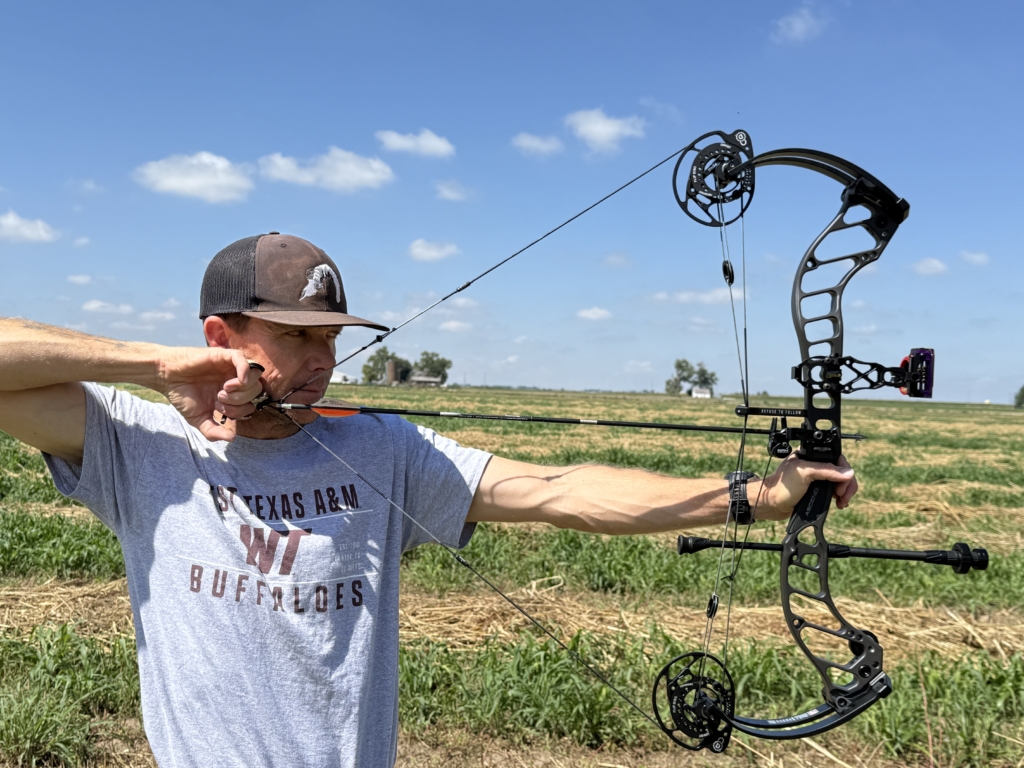
It’s impressive that Bowtech was able to provide each peak draw weight—70 and 60 pounds—with a 15-pound downward draw weight adjustment. This is a feature generally reserved for budget bows. However, I was impressed with how close to spec (70 pounds) the Ascent was. Tight tolerances typically mean an excellent bow build.
How It Shoots
The Ascend features a 6.5-inch brace height, meaning you feel much of the bow’s draw weight in the first few inches. However, that’s not to say the draw cycle is stiff or rigid; quite the opposite, actually. The Ascend has a smooth draw cycle and transition to the bow’s 85 percent Comfort let-off off is silk. The draw stops on the cam contact the bow’s inner cable and provides a just-right backwall feel, creating a pleasant valley without too much sponge.
A smooth draw and jolt-free backwall let me crawl into my two-part anchor and quickly acquire my target. For a compound bow that falls on the short side, the Ascend holds well. I had no trouble letting my pin float on the target while remaining strong in the front and strong in the back until my T.R.U. Ball HBC hinge fired the bow.
At the shot, the bow seemed ultra-quiet and was mostly dead in the hand. The shooting experience was a good one, and though the modular grip felt wide and thick, I shot the Ascend extremely well.
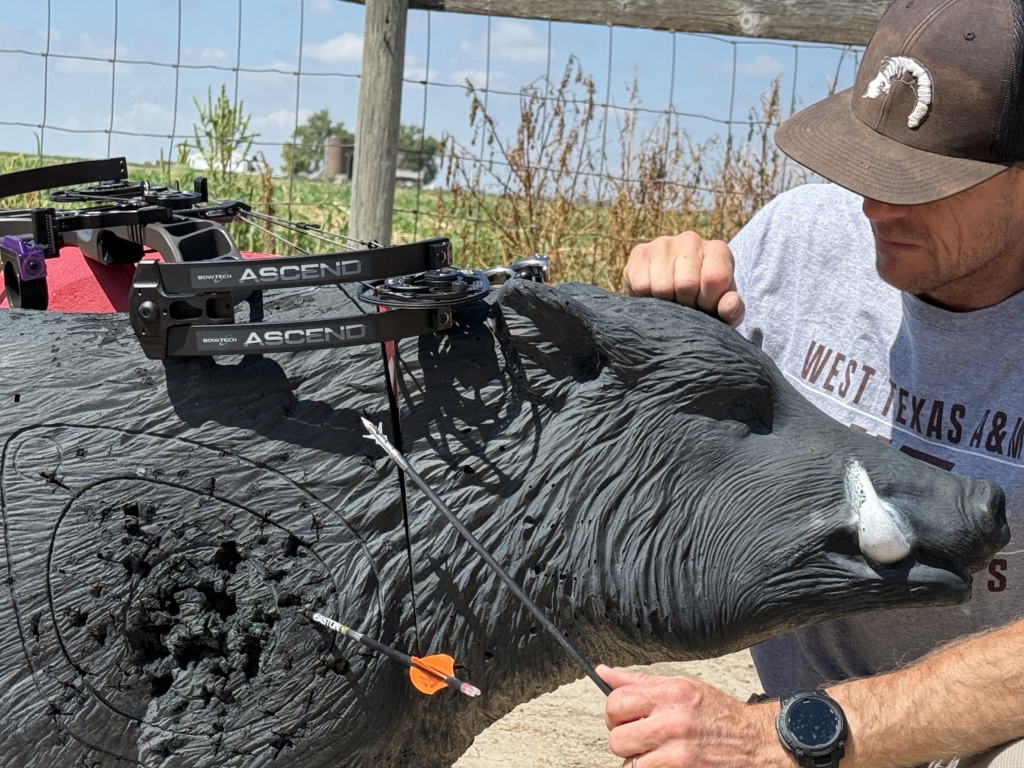
Over the course of an afternoon, I put 108 arrows through the Ascend. I shot it from 10 yards to 60 yards, and the more I shot the bow, the more I liked it. It produces a flagship shooting experience. In fact, I shot the bow head-to-head against Bowtech’s 2025 Proven 34. The Proven 34 is an excellent bow, but I shoot the Ascend better.
Final Tune
If you’ve read my bow reports, you know I don’t paper tune until I get familiar with a bow and get the strings shot in. That was the case here. If I had paper-tuned the bow before getting familiar with the grip, my first arrow through paper wouldn’t have been near bullet-hole perfect.
My first six shots through paper with three Easton 5.0 381.5-grain arrows produced a slight nock left tear. Once again, the bow’s tolerances were impressive. Every arrow produced the same tear, which is a good thing. The better thing was that the tear was quickly eliminated without the need for a bow press. All I had to do was loosen the DeadLock locking screws and use a 7/64 Allen wrench to clean up the tear. Bowtech’s DeadLock tuning system is impressive.
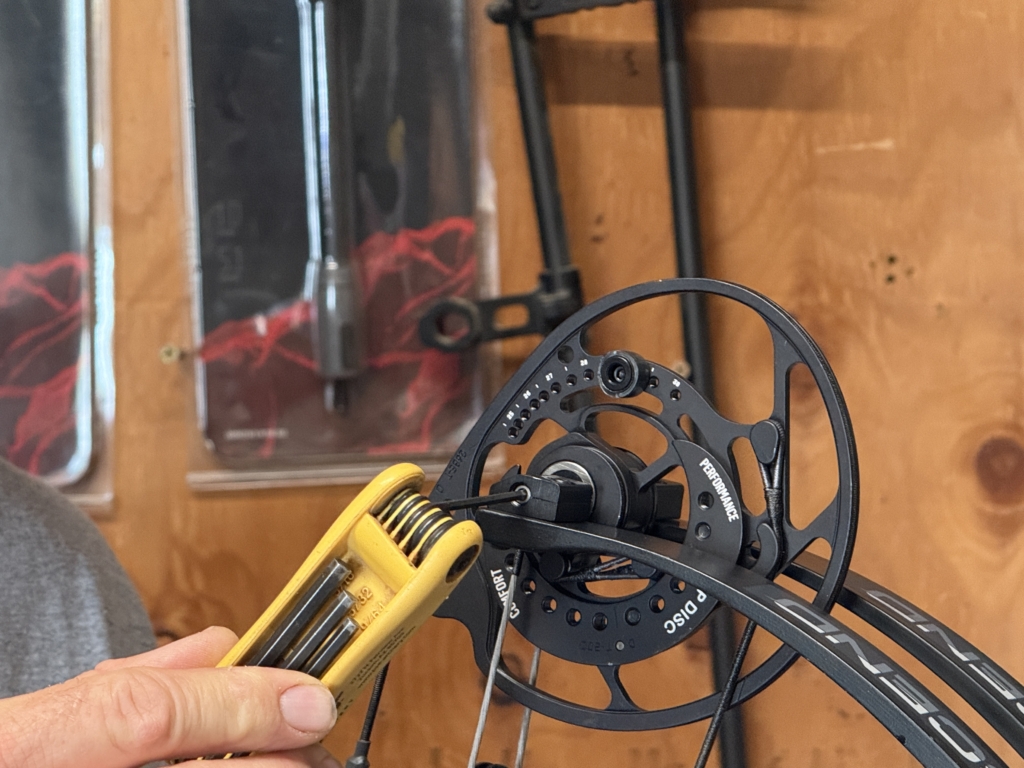
Speed & Noise
Bowtech brands the Ascend with a 340 fps rating. My three-arrow group with the bow set at a draw weight of 70.04 pounds and a draw length of 29 inches produced a three-arrow fps average of 303. That speed was achieved in the Comfort mode and is plenty fast enough for me.
One of the Ascends’ ultra-attractive features is its tranquil shot. This bow is quiet. It produced a three-shot dB rating of 68.5, which is quieter than the manufacturer’s Proven 34.
Final Thoughts
Besides the bow’s grip and the budget DLX Kit, I have zero quarrels dubbing Bowtech’s all-new Ascend a flagship bow. The bow is accurate, quiet, durable, and a joy to shoot. It provides a flagship shooting experience, and the $1K price tag the bow wears is well worth it.
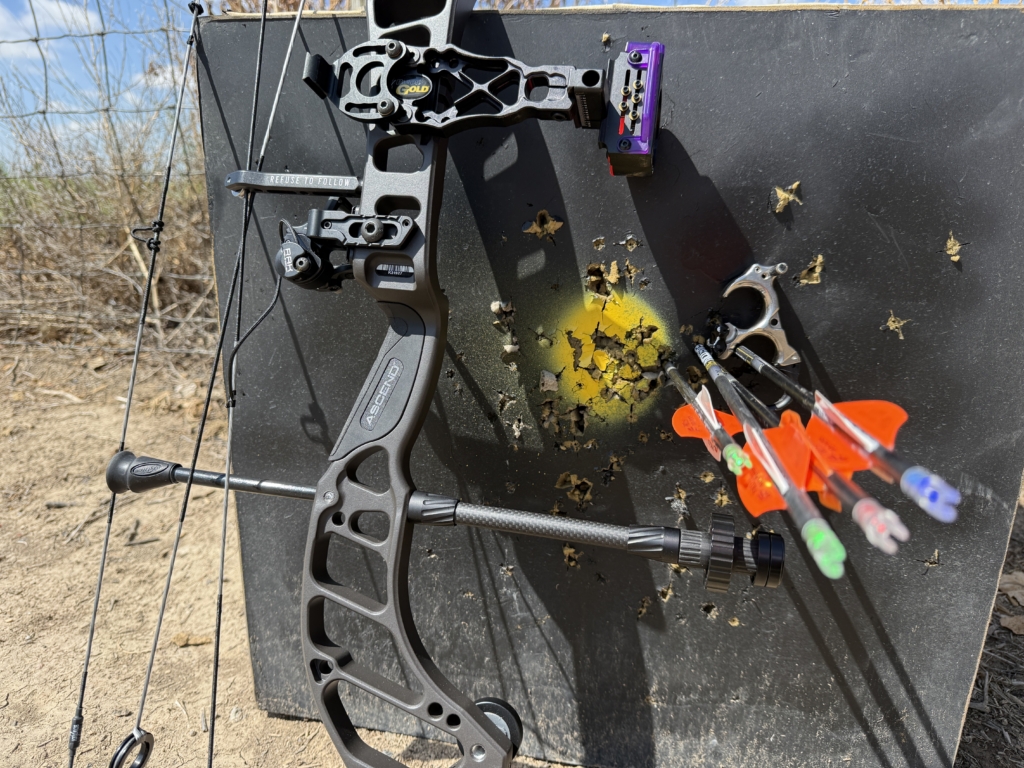
Bowtech Ascend Specs
Axle-to-Axle Length: 31 inches
Brace Height: 6.5 inches
Weight: 4 pounds, 2 ounces
Price: $999; with DLK Package N/A
